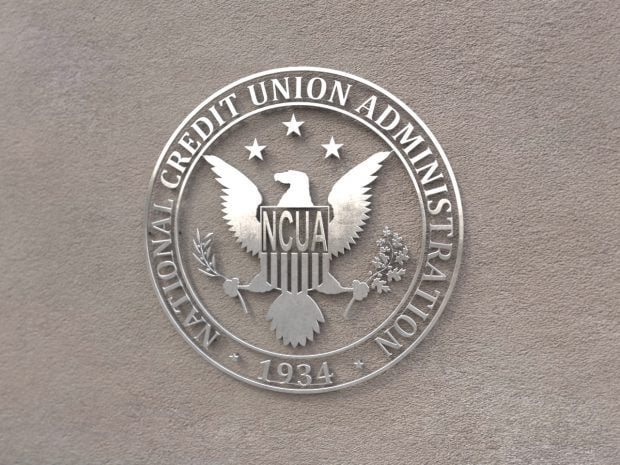 In less than two years, mobile payments are set to be accepted by 53% of merchants and the transaction channel is poised to start replacing cash and credit cards.
In less than two years, mobile payments are set to be accepted by 53% of merchants and the transaction channel is poised to start replacing cash and credit cards.
Michael Kelly, president/CEO of PSCU, a St. Petersburg, Fla.-based payments CUSO, recently shared the stat during a session at NACUSO's annual conference in Las Vegas.
Read more from the Payments Focus Report:
- Small Businesses Crave Tailor-Made Payment Offerings
- Guest Opinion: Mobile Photo Bill Pay Offers New Revenue Stream
In 2010, mobile payments totaled $5 billion, Kelly said. In 2015, that figure is set to soar to $119 billion given that more Americans have smartphones and with the continued growth of mobile commerce and remote payments.
Recommended For You
"Mobile is a super channel," Kelly said. "It continues to be a complement to credit and debit. In 10 years, it will replace cash and credit. We'll have to get some standardization because there are millions of versions out there now."
With innovations like Bitcoins, a form of virtual currency, and more merchant partnerships being formed such as between Square and Starbucks and PayPal and Home Depot, Kelly said there are opportunities for credit unions to be players as well.
Despite all the innovations and expectations predicted to come, for some in the industry, the challenge may be convincing small business owners to rethink how they take and process payments.
According to a BAI Research March survey of more than 1,500 businesses, most continue to highly value close proximity to their branch for access to quick, local decisions on credit, and help with problem resolution.
BAI also found that more than half of all business transactions are conducted at a branch with small businesses showing a strong preference for in-person and live-agent phone conversations with their financial institutions, which drives them to greater branch usage.
Indeed, less than 25% of small businesses surveyed by BAI said they used mobile banking and only 8% used mobile bill pay. Twenty percent of respondents indicated that they prefer online over in-person banking.
"Although seemingly counterintuitive based on comparisons with retail consumers, this segment's strong attraction to the branch, personal service and paper checks, among other preferences, opens the door to grow existing customer relationships and become their primary financial institution," said Todd Robertson, senior vice president of ARGO, the research firm that sponsored the BAI survey.
One way credit unions and others can do this is through facilitating the processing of large check deposits in the branch and by meeting all of the small business owner's needs, both for deposit and loans, Robertson said.
Beyond payments, financial institutions fail on several levels when it comes to meeting the needs of small businesses, according to Treasury Strategies Inc. and MineralTree, two research and payment firms that co-produced a report titled "Why Banks Fail to Seize the Opportunity in Small Business Payments."
For one, there are internal organizational ambiguities that end up creating a small business gap. Secondly, mismatched products and services that don't meet their unique needs and third, some financial institutions fail to form partnerships with third-party vendors to help fill in voids. It's here that credit unions may have an advantage due to their willingness to collaborate more with CUSOs and other industry-friendly firms.
"Banks that refuse to address these challenges risk surrendering revenue from small business payments to the growing ranks of non-bank solution providers," according to the Treasury Strategies and MineralTree report.
Along with that risk is the challenge of persuading small businesses away from checks, which is what half of those surveyed by BAI said was their preferred payment method. Among the reasons for the affinity is that checks create an easy to follow paper trail and check processing is already steeped in existing accounting and payables systems, the data noted.
Despite some reports that branches are expensive, cumbersome and may be on their way to extinction, for the small business member, eliminating that payment channel may be counterproductive. Indeed, BAI said in response to the steady decline in retail consumer branch transaction and traffic volumes, financial institutions are feeling pressure to consolidate their networks.
"With the right tools and training, frontline bankers can better engage small business owners and improve service by offering them the right product at the right time," Robertson said.
However, branch cutbacks might have adverse effect on small businesses banking relationships because financial institutions may miss out on opportunities to provide superior service and achieve a definitive market advantage, particularly in terms of the share-of-wallet captured across core product sets, BAI found.
Kelly at PSCU is convinced that checks are not the way to go for credit unions, particularly when it comes to their younger members. At NACUSO's annual conference, he acknowledged that some credit unions feel they can't make this shift to mobile. Collaboration with CUSOs can help with the transition. Overhauling or upgrading a current card program may be a good entry point as well.
"The thing is some credit unions will spend $3 million for a branch but not on a virtual space," Kelly said. "Credit unions have to be in the game."
© 2025 ALM Global, LLC, All Rights Reserved. Request academic re-use from www.copyright.com. All other uses, submit a request to [email protected]. For more information visit Asset & Logo Licensing.







